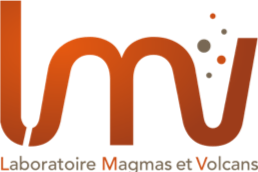Chemical geodynamics
The re-injection of crustal material into the mantle generates chemical and isotopic heterogeneities that cannot be completely erased by convection. Thus, recycling by subduction of oceanic crust, associated pelagic and/or terrigenous sediments, or delamination of subcontinental mantle fragments have been proposed to explain the variations in isotopic compositions observed in oceanic basalts resulting from partial melt of the mantle. The chemical geodynamics theme is based on the analysis of isotopic ratios of radiogenic elements (Sr, Nd, Ce, Hf, Pb) in representative samples of the mantle. It aims at a better understanding of the genesis and evolution of mantle heterogeneities.
Magmatic processes in a continental context
Due to its large thickness, the continental crust is the site of complex volcanic and plutonic processes. One of the most important is certainly the genesis of new continental crust in a subduction zone context. We address this problem by focusing on two decisive steps of the process:
(1) Recycling in arc volcanism of subducted oceanic crust.
In particular, we study the effects of subduction of an oceanic plateau on (i) the subduction thermal regime, (ii) the magma production, and (iii) the transfer of material from the subducted lithosphere to the mantle wedge.
(2) Batholith formation. A high definition chronology of the emplacement of these plutons aims at identifying growth pulses. The targets are the Carnegie rift subduction (oceanic plateau originating from the Galapagos hotspot activity) under the South American plate in Ecuador and the calc-alkaline batholiths of the western USA (Utah) and South America (Ecuador, Peru).
We are also interested in continental intraplate volcanism (rift, hot spot, post-collisional magmatism). Among the targets considered are the volcanism of the Massif Central (origin of millimetric zircons and associated sapphires, origin of the trachytic volcanism of the Puy de Dôme), the magmatism of Central Anatolia and Tibesti (spatiotemporal geochemical evolution).
The research conducted in this theme is largely based on the determination of absolute ages and duration of magmatic events. They are therefore closely linked to the development of U-Th-Pb dating on minerals by LA-ICPMS in the laboratory.


